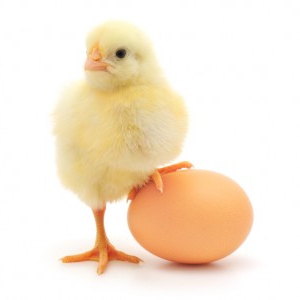 How to organize a farm? Before, poultry farming was not considered a business at all. Only geese, chickens and ducks were kept in villages. A homestead without birds was unthinkable. The bird was bred only for their own needs.
How to organize a farm? Before, poultry farming was not considered a business at all. Only geese, chickens and ducks were kept in villages. A homestead without birds was unthinkable. The bird was bred only for their own needs.
The exception was huge factories that supply meat not only to nearby cities, but also in the region. Today the situation is different. If you make a competent business plan for a poultry farm, you can count on a considerable income.
With the right approach, the bird business can become virtually waste-free. How to open a chicken farm? All the nuances are in our article.
Choosing a place and premises
Start by choosing a room. For a poultry farm, it should be dry and fairly spacious. The area of the building - from 200 square meters (depends on how many goals it is planned to contain). The choice of place depends on the type of bird.
If, for example, you plan to keep geese, pay attention to the presence of pasture and a reservoir (in extreme cases, a pipeline). Rent is not an option, since it will cost 100 thousand rubles a month (or more), a purchase - at least a million.
Such expenses can deprive a novice businessman of profit. Therefore, a domestic poultry farm should be opened by a person who has his own building and adjacent territory.
Organization of a poultry farm
The houses should be livable and successful breeding. Their internal area is calculated based on the fact that for 10, a maximum of 12 young animals will need 1 m2 territory. The room is equipped with drinking bowls, feeders and nests. It is important to set and maintain the most comfortable temperature, avoiding significant deviations from the norm, which is +25 degrees. For young animals use a brooder.
The rules for keeping poultry specified by the Ministry of Agriculture of the Russian Federation focus on fences, isolation of walking areas for each type of bird, and the presence of water effluents. Walls with floors should be easy to clean. Floors are covered with straw, shavings, sawdust. For each type of bird, either different rooms in the same building or completely different buildings are distinguished. Separately equipped manholes - in order to provide the bird with the possibility of walking.
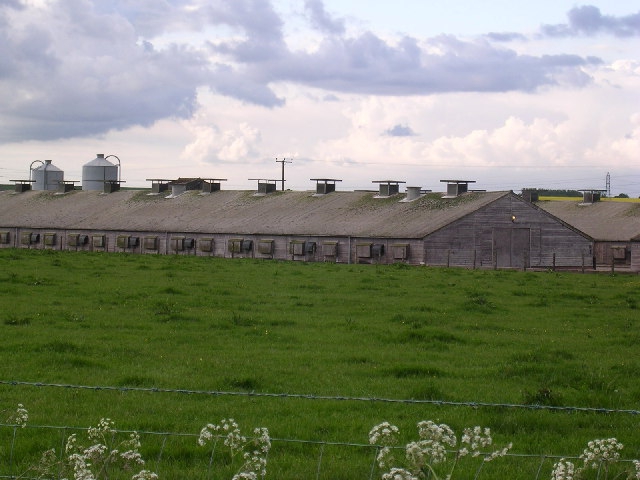
Maintaining the right microclimate is impossible without good ventilation. For this, both windows and mechanical fans are used.
For a large number of birds, long feeders are installed, where approximately 8 cm is required for each head. For drinking bowls, 5 cm is sufficient (but it is better to install automatic ones right away).
To prevent diseases, regular cleaning and disinfection are necessary. This includes cleaning floors from litter, biothermal treatment (including perches and nests), watering the entrance to the room with disinfectant solutions. We will talk about additional activities that allow you to grow healthy birds.
Purchase of live goods
 It is not enough to know how to build a poultry farm; one must still choose the right product. It is important to clearly determine the direction of your company.
It is not enough to know how to build a poultry farm; one must still choose the right product. It is important to clearly determine the direction of your company.
The most common “industrial” bird today is ducks, geese, hens. All of them are divided into three types: mainly egg, meat and egg, and, accordingly, meat. Let's consider each of them in more detail.
- To the best egg breeds of chickens it is customary to include leggorns of partridge, Russian white and minor. Among the meat ones, white corns, plymouth rooks, lan-gshan, and brama are in demand. Meat and egg chickens - Liven, Poltava, New Hampshire, striped plymutrok, armor, rhode island.
- Popular duck breeds include clay, black and white-breasted, gray and Peking.Moreover, the latter is gaining weight faster than all other relatives.
- Light breeds of geese - Gorky, Chinese, Kuban; middle ones - Italian, Shadrinsk, Tula, Arzamas, Rivne; heavy - Kholmogorsky, Toulouse, gray (large), emzemsky.
The cost of young animals (approximate, may vary):
- laying hens - 170-220 rubles. Per head;
- broilers - 70-220 rubles;
- geese - 120-380 rubles .;
- ducks - 80-150 rubles.
Price depends on breed and age. When compiling a business plan for a poultry farm, focus on a minimum of 500 goals. Do not forget about the case.

Feeding
As for the diet of an adult chicken, it should be approximately as follows (%):
- whole-grain mixture, 3 types - 39-41;
- ground grain ("assorted") - 29-31;
- additives of animal origin - 9-11;
- additives of plant origin - 15 (including root crops);
- mineral additives - 5.
August is a time for molting. Feeding during this period should be more plentiful, three times a day: a third of the total dose of cereal in the morning, a wet mash (chopped grain with vegetables) after 3 hours (additionally during the day, sprinkled) and grain in the evening.
Laying hens need 110-130 g of feed, with grain not less than 80 g, and water - from 200 ml. Thus, the estimated feed consumption per year is 43-45 kg.
Fattening
 Broilers (meat breed) contain up to 2.5 months. At first, they should receive boiled eggs, finely chopped wheat, oatmeal (cereal), millet, cottage cheese. Herbal food can be added from the third day, fish products - from the tenth.
Broilers (meat breed) contain up to 2.5 months. At first, they should receive boiled eggs, finely chopped wheat, oatmeal (cereal), millet, cottage cheese. Herbal food can be added from the third day, fish products - from the tenth.
After another ten days, part of the cereal (up to 20%) is replaced by potatoes. Be sure to add vitamins E, B, A, D2. By 2.5 months. Broilers gain weight almost completely, so keeping them longer makes no sense.
In the diet of ducks must be present: grain (waste wheat and rye, barley, corn, oats, millet), plant foods (beets, turnips, rutabaga, potatoes), animal foods (including buttermilk and fish), mineral supplements water.
It is most convenient to feed the geese with the so-called mash:
- barley tart (25 g);
- oat flour (20 g);
- corn and barley ground (25 g each);
- oat flour (20 g);
- grain waste of wheat (20 g);
- oilcake (8 g);
- table salt (up to 2 g).
But the main feed of this bird is grass (1.5-2 kg / day).
It is better to feed geese with grain in the evening (so they will get accustomed to return home after grazing). Shells with chalk make up at least 2.5% of the total diet.
In winter, when there is no grass and, accordingly, grazing, the bird is fed with mealy feeds, grass meal, tubers and root crops. Fattening of young animals for meat lasts nine to ten weeks.
Weight gain and fertility
The poultry farm business plan should consider this item as one of the main ones. Indicative indicators:
- About 250 eggs (from one individual) can be expected from the majority of chicken of egg breeds in the first year. Then fertility drops. Chicken weight per year - up to 2 kg.
- Most breeds of ducks can produce about 170 eggs per year (from one individual). Adult weight is fixed at two months. One duck with a brood can produce up to 100 kg of meat.
- The number of goose eggs is small - from one and a half dozen per season in the first year and up to eight dozen in the second. The weight of the carcass is about 5 kg. In addition, from one goose you can take about 500 g of fluff. How fertilizer is valued litter. In this regard, the approximate "productivity" of the goose is 1 kg per day.
It’s more convenient and profitable to buy already grown young stock (for example, weekly). An alternative solution is incubators.
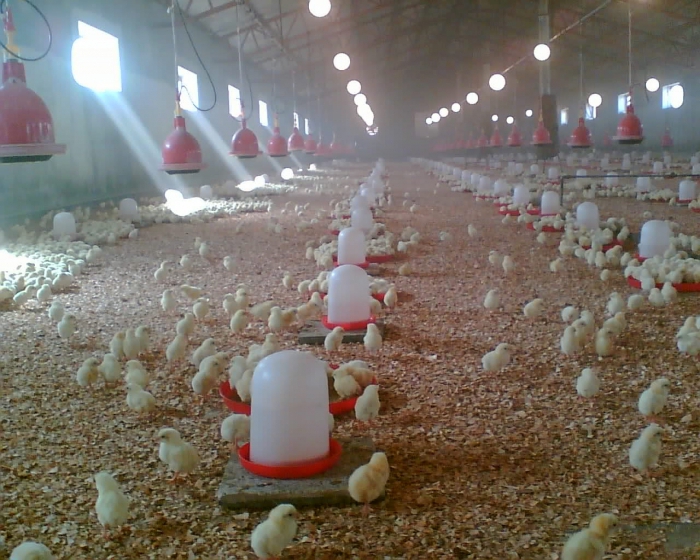
Equipment
The equipment for the poultry farm should be well thought out. What is needed for proper organization? The following costs should be included in the poultry farm business plan (average prices indicated):
- feeders (300 rubles per piece);
- drinking bowls (250 rubles per piece);
- incubators - regular (4000 rubles) and automatic (6600 rubles);
- temperature regulator (600 rubles);
- brooder (5000 rub.);
- fans (700 rubles per unit);
- lighting system (automatic, 120,000 rubles);
- tapes allowing eggs to be taken (100 rubles per sq. m), devices for regular droppings (250 rubles per sq. m);
- peroschipalny machine (10000 rubles);
- cutting tables (30,000 rubles);
- refrigerating chambers (100,000 rubles).
Estimated prices may vary significantly. When purchasing equipment for a poultry farm, specify whether you can count on discounts provided to wholesale buyers.
An important item is the cost of feed.
Estimated cost of feed (per ton, in rubles):
- feed mixture - 5000;
- millet - 5000;
- wheat - 8000;
- corn - 8000;
- barley - 9000;
- rye - 6000.
The indicated prices are also indicative and require clarification.
Staff
You will need workers who will be engaged in cleaning, feeding, slaughtering and butchering poultry. The minimum staff is three people. Estimated monthly salary fund issued to them - 50,000 rubles.
Required documents
How to organize a farm? Suppose you find a suitable place and structure (room), are ready to purchase equipment and hire personnel. But you must start with paperwork. Your business will go through them as an LLC or a farm. The package of documents includes:
- certificate of state. Registration
- TIN (tax registration);
- extract from the USRIP (or register);
- certificate of ownership of the premises (or lease agreement);
- conclusion of SES;
- production map (technological), with a list of equipment;
- BTI plan;
- project documentation with a project of ventilation communications;
- floor explication of all rooms;
- an agreement with garbage collection services;
- certificate of conformity and veterinary certificate for the sale of poultry.
The registration of these documents will take 50-60 thousand rubles.
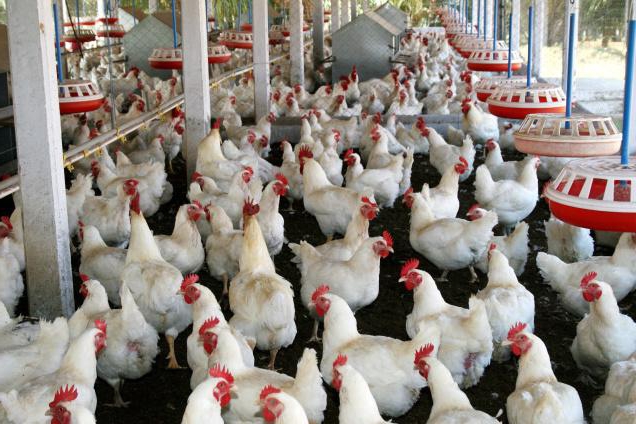
Costs and revenues
Before opening a poultry farm, it is necessary to determine the profitability of the business. It is a relative measure of economic efficiency. Let's try to calculate the profitability of the poultry farm.
Suppose, it is envisaged to rent a building with a not very large plot, the room is equipped (see the list of necessary above), and the planned number of goals is 800 pcs. Estimated initial costs in this case will be about 0.5 million rubles. As for the monthly costs in the future, they can vary between 80-100 thousand rubles. (feed, utility bills, salary).
The approximate cost of goose meat is 290 rubles / kg, ducks - 155 rubles / kg, chicken - 95 rubles / kg. The price of a dozen chicken eggs - 25 rubles. The cost of goose down is 1250 rubles / kg. It will take about six months to fatten and breed meat breeds of chickens.
We calculate for example the possible income from eggs. Suppose you purchased 500 chickens. If one individual lays 18 eggs per month, then all together can give already 9000 pcs. It turns out that the “dirty” income in this case is 22.5 thousand per month. Net of costs, net profit will be approximately 15 thousand per month. Thus, the business should pay off in 7-8 months.
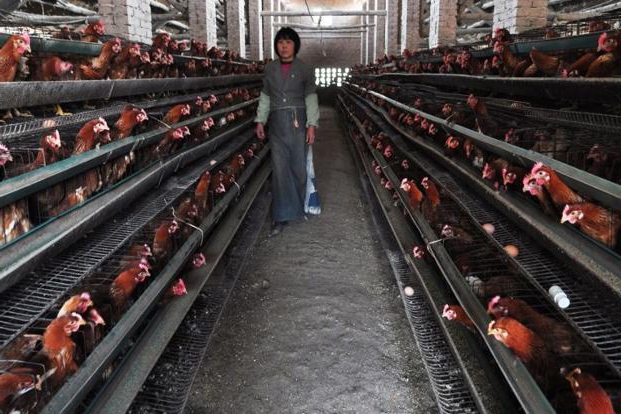
Sales
It’s not enough to know how to organize a farm, you still need to be able to sell your product, which, incidentally, has not too long expiration dates. The sales level will directly depend on demand. For example, if during the year a goose is not a very sold bird, then by the winter holidays it is very in demand. A little more demand for Peking duck. The most "running" chicken broilers. It is important to predict customer preferences.
You will have to start marketing with active advertising, visiting shops, cafes, restaurants. A great opportunity to sell goods is the opening of their own points in the markets. If the product is of high quality, a regular customer will appear who will begin to lead other consumers. Another option is the execution of orders, upon receipt of which the required number (or weight) of the bird is slaughtered, butchered, packaged and, upon receipt of a veterinary certificate, surrendered to the buyer.









Thank you for the article.
I have two clarifying questions: prices for equipment and poultry meat, taken from the calculation of which year?
And how was it calculated that the business should pay off in 7-8 months?
Thank.